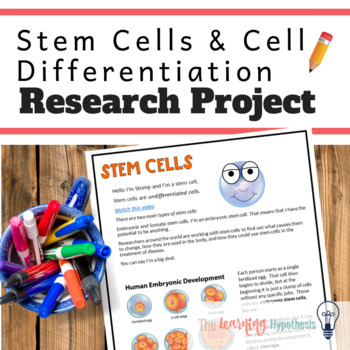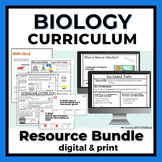Cell Differentiation. Stem Cell Activity
- Zip
- Webquests
What educators are saying
Also included in
- Price $225.00Original Price $336.63Save $111.63
- This is a set of resources for your Cell Unit! Covering topics like organelles, STEM cells, plant vs. animal cells, prokaryote vs. eukaryote and cellular diversity.Includes:Graphic NotesGamesPresentationTextsTask CardsDigital AssignmentsDid you know?I often post products at 50% off in the first 24 tPrice $19.21Original Price $27.45Save $8.24
Description
Cell differentiation is a topic that is talked about in both middle and high school. This covers the variety of STEM cells and their uses. This is a great guided research project.
Students are provided with links and questions to answer using the videos, tutorials, and information found at these links. This resource now utilizes YouTube videos.
This project includes:
- overview of Stem cells and the role of cell differentiation
- embryonic
- somatic
- pluripotent
- created embryonic
- cancer stem cells
- leukemia and bone marrow transplant
Suggested uses include:
- Homework. This can be sent home for students to do.
- Learning Stations. You can use this as a learning stations activity where students move around the room. You could use computer stations, iPads, or Chromebooks for internet access at each station.
- Create a mock conference. Where students are sent around the room to different “conference spaces” to learn about different information presented.
- This is also a great sub plan or use for students to make up an absence.
Correlates with both NGSS and Common Core Standards.
- MS-LS1-1
- HS-LS1-4
Related Products
⭐ Cell Cycle and Cancer Worksheet Packet
⭐ Cell Structure Worksheet. Graphic Notes.
⭐ Mitosis Activity. Escape Room
Did you know?
I often post products at 50% off in the first 24 to 48 hours. I'm busy creating and updating so don't miss anything - make sure to FOLLOW ME! You will be the first to find out when I post anything new and you won't miss out on flash sales.
If you have any questions or need further assistance, please feel free to reach out to me. I'm here to help!




